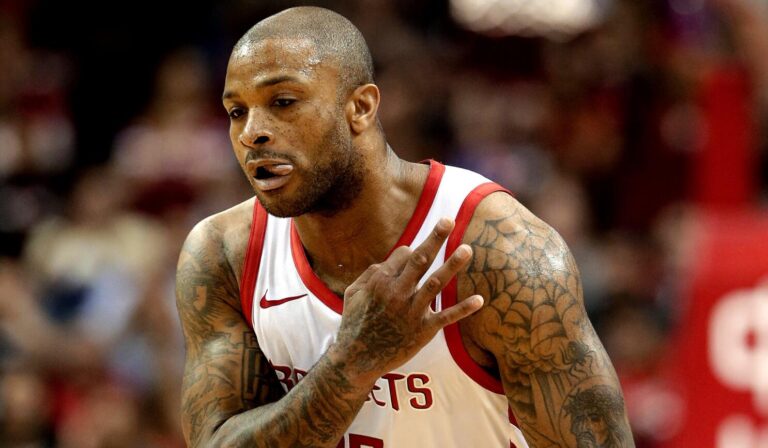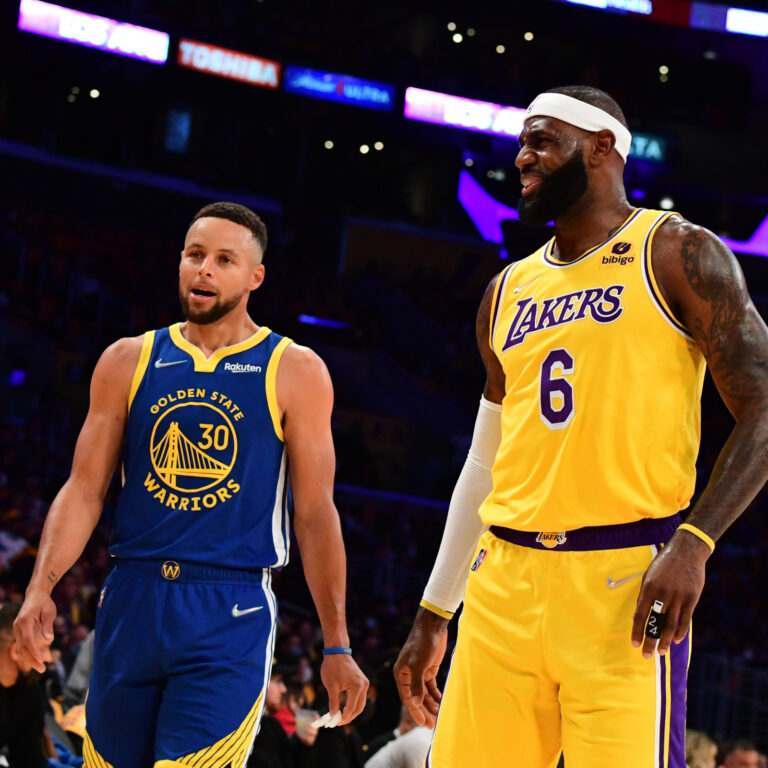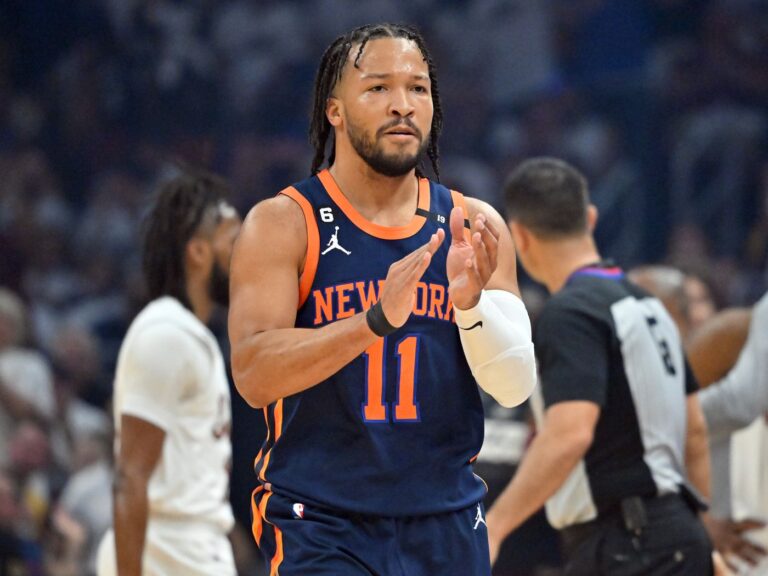Unveiling the Unintended Consequences in the NBA’s Competitive Landscape
-
To read 12 min.
-
Published
-
Comments 0
Key Points
- The NBA faces unintended consequences from rules such as the 65-game threshold for award eligibility, affecting stars like Joel Embiid and Tyrese Haliburton.
- The league’s efforts to balance competitive integrity with player health are challenged by the realities of injuries and the demands of an 82-game season.
- The NBA’s scoring explosion, highlighted by performances like Luka Doncic’s 73-point game, prompts discussions on the balance between offense and defense.
- The NBA continues to evolve, seeking to adapt its policies and gameplay to maintain a captivating, fair, and dynamic competitive environment.
The Evolution of the NBA’s Salary Cap: A Double-Edged Sword
The NBA found itself at a crossroads in 2016 when a significant salary cap increase reshaped the league’s competitive dynamics, allowing the Golden State Warriors to sign Kevin Durant, a move that reverberated across the basketball world. This strategic financial adjustment, intended to provide teams with more flexibility and foster a more competitive league, inadvertently led to the formation of a super team, sparking debates about the balance of power within the NBA. Today, the term “unintended consequences” re-emerges, not over salary cap issues, but concerning player eligibility for awards due to a stringent games-played threshold. This policy, aimed at maintaining the integrity of the league’s accolades, risks sidelining top talents like Joel Embiid and Tyrese Haliburton from prestigious recognitions due to injuries and game absences, highlighting the delicate balance between league regulations and competitive fairness.
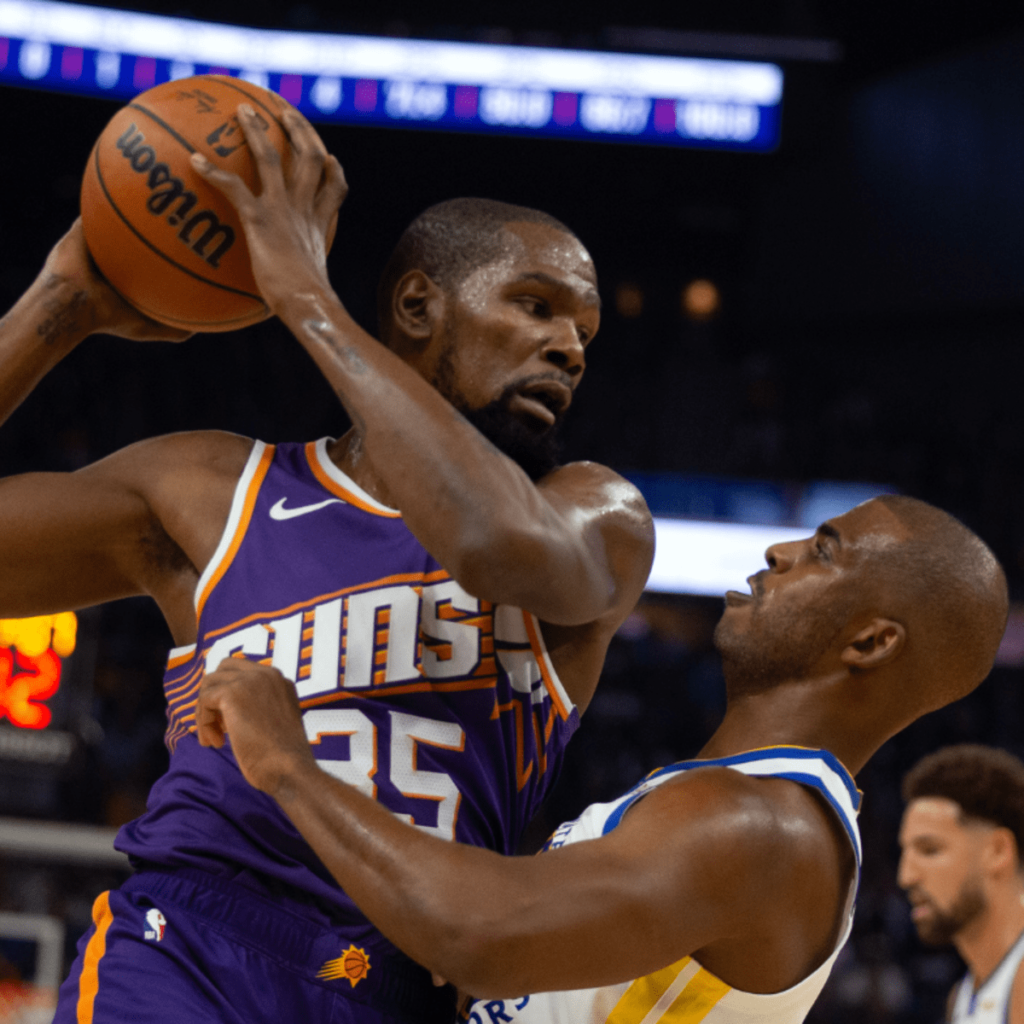
Navigating the complexities of league policies, the NBA once again faces the challenge of unintended consequences, as the 65-game requirement for award eligibility becomes a focal point of contention. Joel Embiid, the Philadelphia 76ers’ cornerstone, and Tyrese Haliburton, the season’s most surprising talent, find themselves at the mercy of this rule. Embiid, despite a history of knee problems, has demonstrated resilience and excellence on the court, embodying the spirit of an MVP but risks being overlooked due to missed games. Similarly, Haliburton’s ascent is threatened by an injury that sidelines him from not only games but potentially from earning well-deserved accolades, casting a shadow over the rule’s impact on player recognition and morale.
The introduction of the 65-game benchmark by the NBA, conceived as a measure to ensure players’ active participation throughout the season, underscores the league’s effort to enhance the competitive landscape and the value of regular-season games. However, this well-intentioned rule brings to light the unpredictable nature of sports, where injuries and the necessity for rest can conflict with the criteria set for award eligibility. As the NBA grapples with these challenges, the experiences of Embiid and Haliburton serve as a testament to the ongoing dialogue between maintaining a high competitive standard and acknowledging the realities of the physical demands placed on athletes. The league’s ability to address these unintended consequences will be crucial in forging a path that honors both the achievements of its players and the integrity of the competition.
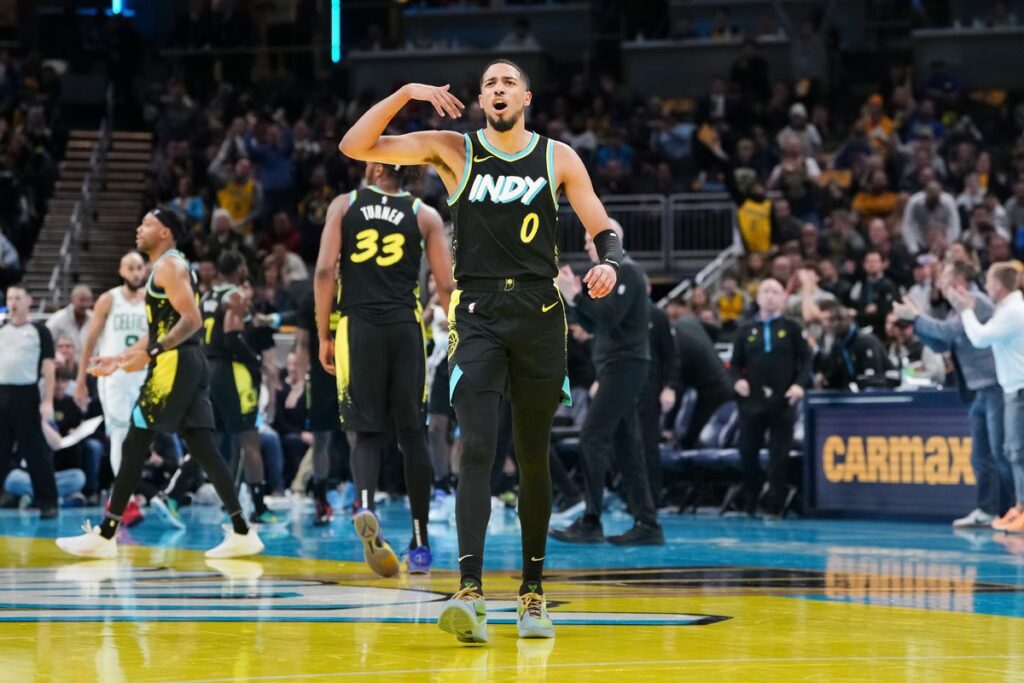
The Balancing Act: League Intentions vs. Player Realities
The NBA’s endeavor to strike a balance between league aspirations and the real-world challenges faced by its athletes is epitomized by the current debate surrounding the games-played threshold for awards eligibility. This policy, embedded within the fabric of the league’s regulations, reflects a broader intention to preserve the sanctity of the competitive season and ensure that accolades go to those who not only excel but also consistently participate. Yet, the practical implications of such a rule have ignited discussions about its fairness, especially as players like Joel Embiid and Tyrese Haliburton navigate the hurdles of injuries and the rigorous demands of professional basketball. These instances highlight the intricate dance between the league’s vision for an ideal competitive environment and the unpredictable nature of athletic performance and health.
???? #IYKYK … link in bio @sixers @cryptocom pic.twitter.com/vAQKPdVPDG
— Joel Embiid (@JoelEmbiid) December 19, 2023
As the NBA confronts the repercussions of its eligibility criteria, the voices of players and executives alike shed light on the complexities of implementing broad policies in a league as dynamic and diverse as the NBA. Tyrese Haliburton’s open criticism of the rule as “stupid” juxtaposes with the perspective of NBA executive vice president Joe Dumars, who emphasizes the collective bargaining process that led to its adoption. This dialogue encapsulates the broader debate within professional sports about how best to balance regulatory intentions with the individual circumstances of players, a challenge that requires ongoing negotiation and adaptation. The league’s commitment to ensuring a fair and engaging competition is tested by these scenarios, prompting a reevaluation of how rules impact not only the game’s integrity but also the well-being and career trajectories of its players.
In the midst of these discussions, the role of collective bargaining in shaping league policies becomes increasingly significant. The 65-game rule, while a point of contention, underscores the collaborative nature of decision-making in the NBA, involving a wide array of stakeholders from players to team owners. This process, although comprehensive, faces the daunting task of foreseeing and mitigating unintended consequences, a testament to the complexities of managing a professional sports league. The experiences of Embiid and Haliburton underscore the need for a flexible, empathetic approach to rule-making, one that considers the nuances of player health, the unpredictability of injuries, and the overarching goal of enhancing the league’s competitive landscape. As the NBA continues to evolve, finding equilibrium between these diverse elements will be paramount in fostering a league that celebrates excellence, ensures player well-being, and captivates fans worldwide.
The Ripple Effects: Competitive Integrity and Player Impact
The NBA’s implementation of the 65-game threshold for awards eligibility is a policy with far-reaching implications, not only for individual players but for the league’s competitive integrity as a whole. This rule, designed to encourage player participation and combat the trend of load management, inadvertently places players like Joel Embiid and Tyrese Haliburton in precarious positions, where their eligibility for recognition and accolades is jeopardized by circumstances often beyond their control. The inherent tension between maintaining a rigorous competitive standard and accommodating the realities of player health and well-being underscores the complex nature of sports management and the challenges of crafting policies that are both fair and effective.
These unintended consequences ripple through the league, affecting not just the players in question but also the teams they represent and the fans who follow them. The potential ineligibility of star players for awards due to not meeting the games-played requirement raises questions about the true representation of excellence in the NBA. As the league seeks to uphold the integrity of its competitions and recognitions, it must also consider how these rules impact the narrative of the season, the legacy of its athletes, and the engagement of its audience. The balance between ensuring a competitive, dynamic league and acknowledging the physical and mental toll of the sport on its players is a delicate one, requiring continuous dialogue and adjustment.

Furthermore, the debate surrounding the 65-game rule and its impact on awards eligibility reflects a broader conversation about the evolution of the NBA and professional sports in general. As the league navigates the challenges of maintaining competitive balance, enhancing viewer engagement, and ensuring player health, it confronts the reality that policies may have unintended effects on the very objectives they seek to achieve. The experiences of Embiid, Haliburton, and other players in similar situations offer valuable insights into the complexities of sports management, highlighting the need for a nuanced approach to rule-making that considers the diverse needs and perspectives of all stakeholders. In the pursuit of excellence and fairness, the NBA’s journey through these challenges underscores the ongoing evolution of the game and the importance of adaptability in fostering a league that is both competitive and compassionate.
Navigating the Scoring Explosion: A New Era of NBA Excellence
The NBA is currently witnessing an offensive revolution, marked by a dramatic increase in scoring that has redefined the parameters of individual and team success. This surge in offensive output, highlighted by remarkable performances such as Luka Doncic’s 73-point game, signals a transformative period in the league’s history. While these scoring feats captivate fans and underscore the extraordinary talent within the NBA, they also prompt a reevaluation of the game’s strategic balance between offense and defense. The league’s challenge lies in preserving the essence of competition while adapting to the evolving dynamics of basketball, ensuring that the game remains both engaging and fair. As scoring averages climb, the NBA finds itself at a crossroads, tasked with navigating the implications of this shift for competitive balance and the overall viewer experience.
OH MY GOODNESS DERECK LIVELY ????
— ClutchPoints (@ClutchPoints) January 30, 2024
Luka Doncic’s reaction ????pic.twitter.com/tx2EAg8sGW
The implications of the scoring explosion extend beyond mere statistics, influencing the strategic frameworks of teams and the league’s regulatory approach to gameplay. This era of high-octane offense has sparked discussions among league officials, coaches, and players about the need for potential adjustments to rules and playing styles to maintain a balanced and entertaining product. Joe Dumars, with his rich history as both a player and executive, brings a unique perspective to this conversation, emphasizing the importance of a game that captivates audiences through its competitiveness rather than sheer scoring. The NBA’s engagement with this issue reflects its commitment to a holistic understanding of the game’s evolution, seeking ways to enhance the competitive environment without diminishing the achievements and skills of its players.
As the NBA continues to grapple with the scoring explosion and its broader implications, the league’s response will likely shape the future of professional basketball. The ongoing dialogue between the NBA and its stakeholders underscores a collective pursuit of a game that balances offensive innovation with defensive strategy, ensuring that basketball remains a dynamic and multifaceted sport. The challenge of adjusting to this new era of NBA excellence is not solely about managing scoring averages but about fostering a league that celebrates all aspects of the game. In this pursuit, the NBA’s ability to adapt and evolve in response to changes within the sport will be critical in maintaining its status as a premier professional sports league, beloved by fans for its thrilling competition and unparalleled athletic showcase.
Striking a Balance: The Future of NBA Competition
The NBA’s journey through regulatory changes, scoring surges, and debates over player eligibility underscores a broader mission: to strike an optimal balance that honors the game’s integrity, player welfare, and fan engagement. As the league confronts the challenges posed by the modern era of basketball, including the rise in scoring and the intricacies of managing player health, it finds itself at the forefront of sports innovation. The quest for balance is not merely about navigating current issues but about anticipating future developments in the sport. This proactive stance is essential in ensuring that the NBA remains a leader in the global sports landscape, capable of adapting to changes while preserving the core elements that make basketball a beloved and captivating sport.
In this context, the league’s engagement with players, coaches, and fans becomes more crucial than ever. The NBA’s decision-making process, particularly regarding rules that affect player eligibility and the competitive balance, reflects a commitment to inclusivity and dialogue. By considering the diverse perspectives within its community, the NBA aims to forge policies that are not only fair but also reflective of the collective values and aspirations of its stakeholders. This collaborative approach is vital in addressing the unintended consequences of well-intentioned rules and in navigating the complexities of the modern game, where the lines between innovation, tradition, and fairness often intersect.
Looking ahead, the NBA’s ability to balance the evolving nature of basketball with the timeless principles of sportsmanship and competition will define its trajectory. As the league continues to evolve, it will undoubtedly face new challenges and opportunities. Yet, the ongoing dialogue between the NBA and its community—rooted in a shared love for the game—offers a strong foundation for navigating these changes. The future of NBA competition, marked by its response to the scoring explosion, player health concerns, and the quest for competitive integrity, promises to be as dynamic and exciting as the game itself. In this journey, the NBA’s commitment to adaptation, dialogue, and balance will be key in shaping a league that honors its past, celebrates its present, and eagerly anticipates its future.
FAQs
- Why has the NBA’s 65-game threshold for award eligibility become a contentious issue?
The 65-game threshold for award eligibility has become contentious because it potentially sidelines top talents like Joel Embiid and Tyrese Haliburton from receiving awards due to injuries or missed games, highlighting a clash between maintaining competitive standards and the realities of player health.
- How does the current scoring explosion in the NBA impact the game’s competitive balance?
The scoring explosion, marked by historic scoring feats such as Luka Doncic’s 73-point game, has led to discussions about the need for potential rule adjustments to ensure a balanced and entertaining game that values both offensive prowess and defensive strategy.
- What is the NBA doing to address the challenges posed by the modern era of basketball?
The NBA is engaging in ongoing dialogue with players, coaches, and stakeholders, considering rule changes, and adapting policies to manage the complexities of the modern game. This includes addressing the scoring explosion, player health concerns, and ensuring that the league’s competitive environment remains dynamic and fair.



